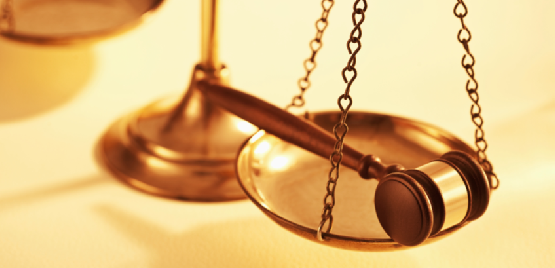Subsidiary liability is a special type of obligation. It involves three parties. The first is the creditor, the second is the main debtor, and the third is the additional obligatory (subsidiary). The scope of application of these relations has been significantly expanded in the new legislation. This provides greater reliability of property turnover. Next, we consider in more detail what constitutes subsidiary liability. 
Liability scheme
Subsidiary liability can be described as follows:
- The obligated party has not complied with the requirements.
- The creditor makes a claim to the main debtor.
- The obligated participant refuses to fulfill the requirements or does not give any response to the appeal within a reasonable time.
- The creditor is entitled to apply to a person bearing subsidiary liability.
- The additional party must, prior to satisfying the requirement, notify the principal obligee of this. If a lawsuit is brought against him, the subsidiary participant should bring the main debtor to the case.
Additional Party Rights
Due to the fact that the entity bearing subsidiary liability, in appropriate cases, takes the place of the obligated party, it may use objections against the claims of the creditor, including those that have already been presented. They can have a significant impact on the outcome of a dispute. At the same time, the subsidiary liability of the debtor is doubled. 
Grounds for occurrence
Bringing to subsidiary liability may take place in cases provided by law. So, in article 75, paragraph 1 of the Civil Code, legal relations in a partnership are considered. In accordance with the normative act, subsidiary liability is provided for by the own property of the participants of such an association for existing obligations. This form also takes place at the conclusion of a contract of guarantee. In case of improper fulfillment or evasion of fulfillment of requirements by the debtor, the creditor attracts a guarantor - an additional responsible person. This provision is enshrined in Art. 363 Civil Code. In such situations, the creditor is obliged to first send claims to the main debtor and only then to the additional one (if the first evades from taking any actions). Thus, it is possible to determine the basic conditions under which an additional obligation arises. Subsidiary liability arises if:
- the main obligated participant refuses to fulfill the requirements;
- the creditor did not receive a response from the original debtor within the prescribed (reasonable) time period.
These conditions are enshrined in Article 399, paragraph 1. This procedure for presenting a preliminary claim is considered to be complied with if the creditor sent a written claim to the main debtor and did not receive a response within a reasonable time or was refused. 
Limitations
Even with the above conditions, subsidiary liability does not arise in all cases. So, for example, the creditor cannot turn to the additional party if the satisfaction of the claim can be carried out by offsetting counterclaims or an indisputable recovery from the principal debtor. This provision is recorded in Art. 399, paragraph 2. Such a restriction is caused by the fact that the creditor in such cases has the opportunity without special difficulties for himself to satisfy his claims without resorting to an additional participant.So, he can not make a claim after the refusal of the original debtor, if the latter has a counterclaim to pay a larger amount. At the same time, the payment term has already come and the limitation period has not expired. In this case, the creditor, without the consent of the original debtor, can repay his claim at the expense of the counterparty by offset.
Regression commitment
Subsidiary liability provides for the right of an additional person to present a return requirement to the original obligation. The realization of this possibility is allowed if the established procedure for satisfying the requirements of the creditor is observed. In particular, as was said above, before this, the subsidiary debtor must notify the principal of his intentions.
Normative base
The procedure for applying subsidiary liability is established in Art. 399. Cases of its occurrence include more than 15 articles. In particular, under the law, a subsidiary obligation arises for the Russian Federation for the debts of state enterprises, members of a cooperative - for the requirements presented to the association, for the owner - for claims filed with respect to the institution, and so on. 
Subsidiary liability LLC
Until 2009, she had little interest in authorized regulatory authorities and creditors. The reason for this was the lack of necessary regulations. Prior to the adoption of the Law on Bankruptcy, subsidiary liability of the head, accountant, and other persons was not provided. Thus, the powers of supervisory authorities and the possibilities of creditors were quite limited.
The subsidiary liability of the director did not arise due to the fact that he carried out all his actions not on his own behalf, but on behalf of the organization. In this regard, it was impossible to directly demand fulfillment of obligations from him. With the adoption of the Law, the rights of these persons have expanded significantly. In particular, subsidiary the responsibility of the founder chief and other officials in the bankruptcy process. The law provides a list of entities in respect of which an obligation arises. Thus, in accordance with the new regulation, subsidiary liability is established:
- the founder;
- Chairman of the liquidation commission;
- Leadership
- members of the governing body;
- management company;
- members of the board of directors;
- other controlling persons.
Political sphere
The Civil Code of the Russian Federation is far from the only normative document providing for the emergence of a subsidiary obligation. It is enshrined in other acts. In particular, regional divisions and structural registered branches of a political party are liable for obligations with the property at their disposal. In some cases, it may not be enough. In such situations, a political party incurs subsidiary obligations. 
Professional associations
In accordance with their constituent documents, the obligation of organizations to make compensation payments is established. They are defined in the corresponding Federal Law. At the same time, subsidiary liability is established for participants in the trade union. It, respectively, relates to the obligations of the organization.
Other areas
Persons who sign the prospectus for securities, if found guilty, will bear subsidiary liability for damage caused to the owner by the issuer. Damage may arise, in particular, due to the presence of false information, incomplete or misleading the investor, confirmed by the signatories. Institutions belonging to the Russian Academy of Agricultural Sciences are liable with their own property and the funds that they received as a result of profitable activities, for their obligations. If these resources are not enough, another obligation arises.In particular, the Academy directly incurs subsidiary liability. 
Distinctive features
It is necessary to clearly understand the difference between a subsidiary obligation and liability for a third party. The latter is not connected by any civil legal relationship with the creditor, who in this connection can make demands only within the limits of the contract. Under the terms of the agreement and the law does not provide for the enforcement of a lender to a third party who has not properly performed or evaded the obligation. The debtor, in turn, is liable to the creditor for the indicated actions of another citizen. For example, a contractor may assign a part of the work to a subcontractor.
In this case, the responsibility to the customer for non-performance will be borne by the first. The subcontractor in this case acts as a third party. He does not participate in the general agreement, but only performs a part of the work. If it is not fulfilled, the customer shall hold the contractor liable. He, in turn, after fulfillment of the obligation has the right to recourse claim against the subcontractor. If the customer receives compensation for losses, the contractor may claim compensation from a third party. Moreover, the law provides for other cases. For example, the responsibility to the customer can be borne directly by the contractor, that is, a third party. In this case, the main obligated requirements are not presented. 
A special case
A subsidiary obligation should also be distinguished from the liability that the debtor bears for its employees. It is provided for in Art. 402 GK. Employees are persons who are in an employment relationship with a debtor. In this case, the actions of employees to fulfill the obligations of the tenant are considered his own. If in the above example the contractor is a legal entity, then it will be liable to the customer in the event that its employees will improperly carry out the actions provided for in the contract. In this case, employees are not third parties. Any legal entity has the right to participate in a civil relationship through its own employees. Their actions, therefore, will be considered the activities of the legal entity itself.








